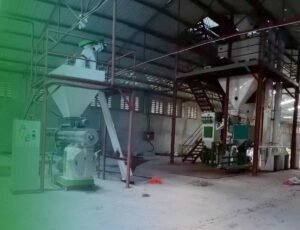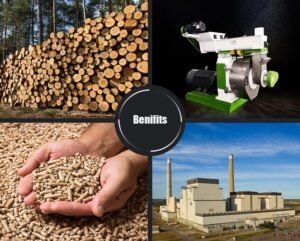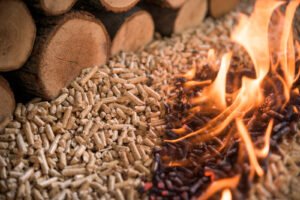
Introduction
In developing regions and rural communities across the globe, smallholder poultry farmers play a vital role in food security and local economies. Yet, they often face persistent challenges such as high feed costs, inconsistent feed quality, and limited access to modern technologies. One game-changing innovation that can bridge this gap is the poultry feed pellet machine.
This article dives into how feed pellet machines empower smallholder farmers, improve productivity, reduce dependency on external feed suppliers, and build a more resilient farming model from the ground up.

1. Challenges Faced by Smallholder Poultry Farmers
Smallholder farmers typically manage between 50 to 500 birds and contribute significantly to local meat and egg supplies. However, they often face obstacles including:
- Limited access to commercial feed or fluctuating prices
- Low-quality mash feed that reduces feed intake and performance
- Wastage of raw materials due to poor storage or feed handling
- Inability to customize rations based on poultry needs
- Reliance on external suppliers, which increases vulnerability
Without the ability to control feed production, smallholders are locked into a system that limits profitability and scalability.
2. Why Poultry Feed Pellet Machines Are Ideal for Small Farms
Poultry Feed Pellet Making Machines offer a low-barrier entry point into self-sufficient feed production. Here’s how:
a. Cost-Effective Feed Production
By sourcing raw materials locally (like maize, rice bran, soybean meal, or fishmeal), farmers can produce balanced feed for a fraction of the cost of commercial brands.
b. Reduced Feed Wastage
Pellets are compact, uniform, and less likely to be blown away or trampled compared to powdery mash feed. Chickens also waste less when eating pellets.
c. Custom Feed Formulation
Smallholders can tailor feed to suit different needs:
- Starter feed for chicks
- Grower feed for broilers
- Layer feed with calcium enrichment
- Medication or supplements can also be added when needed
d. Improved Bird Performance
Pelleted feed enhances digestibility, supports faster weight gain, and reduces mortality rates—especially important for farmers whose income depends on small flocks.
3. Features to Look for in a Feed Pellet Machine for Small Farms
Smallholder farmers need reliable, affordable, and easy-to-operate machines. Key features include:
| Feature | Importance |
|---|---|
| Production Capacity | 100–1000 kg/h is ideal for small farms |
| Electric or Diesel Option | Choose based on power availability |
| Flat Die Design | Simple to use, cost-effective, and compact |
| Integrated Mixer | Helps in achieving uniform feed composition |
| Portability | Easy to move between locations if needed |
| Low Maintenance Needs | Essential for areas without technical service |
Many suppliers now offer mini poultry feed pellet machines specifically designed for rural and developing areas.
4. Step-by-Step Guide: Setting Up a Smallholder Feed Pellet Operation
Step 1: Sourcing Raw Materials
Use locally available resources such as:
- Cereal grains: maize, wheat, sorghum
- Protein sources: soybean meal, fishmeal, sunflower cake
- Additives: premixes, limestone, salt
Step 2: Grinding and Mixing
Use a hammer mill to grind materials. Then, mix the ingredients using a drum mixer or by hand in correct proportions for the bird’s stage.
Step 3: Pelletizing
Feed the mixed mash into the feed pellet machine. Adjust parameters such as moisture and temperature to produce consistent, durable pellets.
Step 4: Cooling and Storage
Cool pellets naturally or with a simple cooling tray. Store in bags or bins in a dry, cool place for later use.
5. Business Opportunities from a Pellet Machine
A poultry feed pellet machine can also become an income source:
- Sell custom feed to neighbors and small farms nearby
- Provide pelletizing services for others’ raw materials
- Partner with co-ops or farmer groups to produce in bulk
Some smallholders even form micro-enterprises focused solely on feed production.
6. Training and Support for Smallholders
Local governments, NGOs, and agricultural cooperatives are increasingly recognizing the potential of feed pellet machines to uplift rural economies. They offer:
- Training programs on feed formulation
- Subsidized equipment programs
- Demonstration farms for hands-on learning
- Grants or low-interest loans for agribusiness development
By leveraging these resources, smallholders can overcome the knowledge and financial barriers of adopting new technologies.
7. Sustainability and Community Impact
Feed pellet machines not only help individual farmers but also build stronger communities:
a. Reducing Agricultural Waste
Farm by-products and crop residues that would be wasted are converted into valuable feed, reducing environmental impact.
b. Promoting Local Supply Chains
Instead of relying on distant suppliers, farmers use local resources and build relationships with nearby growers and grain sellers.
c. Enhancing Food Security
With better poultry health and productivity, communities gain more consistent access to affordable protein.
8. Real-World Success Story: Empowering a Women’s Poultry Group in Kenya
The “Maendeleo Women’s Poultry Cooperative” in rural Kenya acquired a 300 kg/h flat die feed pellet machine through a government-backed microloan.
- They pooled resources and began producing feed for their own flocks
- Within a year, they expanded into selling feed to neighboring farms
- Income from feed production allowed them to grow their flocks by 40%
- The cooperative now employs five women full-time
Their story demonstrates how even a modest feed pellet machine can transform livelihoods at the grassroots level.
Conclusion
The poultry feed pellet machine is more than just a piece of equipment—it’s a catalyst for transformation among smallholder farmers. By offering cost savings, autonomy, and the ability to formulate custom feed, it helps unlock new levels of efficiency and profitability. Even more importantly, it fosters self-reliance, builds stronger rural economies, and contributes to food security.
As more smallholder farmers embrace this technology, the poultry sector becomes more inclusive, sustainable, and resilient for the future.






